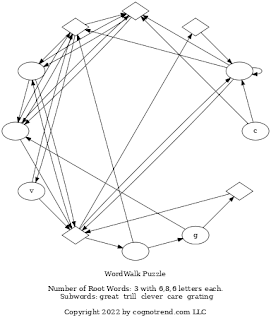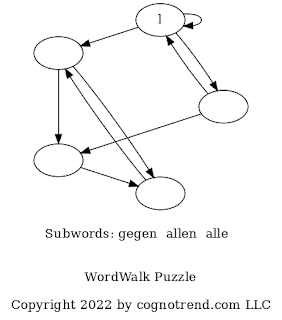It turns out that some WordWalk puzzles have different solutions. That's because many different can have the same set of unique letters. E.g., the words 'earth', 'heart', 'rather', 'theater', 'threat' all use the same unique set of letters {e,a,r,t,h}, although some words use multiple instances of the same letter. 'theater', for instance, use e and t twice each. I call such words equivalent to each other. Here's another set of equivalent words:{'pressure', 'purse', 'pursue', 'super'} And yet another: {'concentration', 'container', 'creation', 'interaction', 'reaction'} If a WordWalk puzzle is built from any one of a set of equivalent words, it may have the same structure (i.e., be isomorphic) as one built from another from the same set of equivalent words -- but not necessarily! The nodes will certainly be the same, but the arrows may be different. Con...




